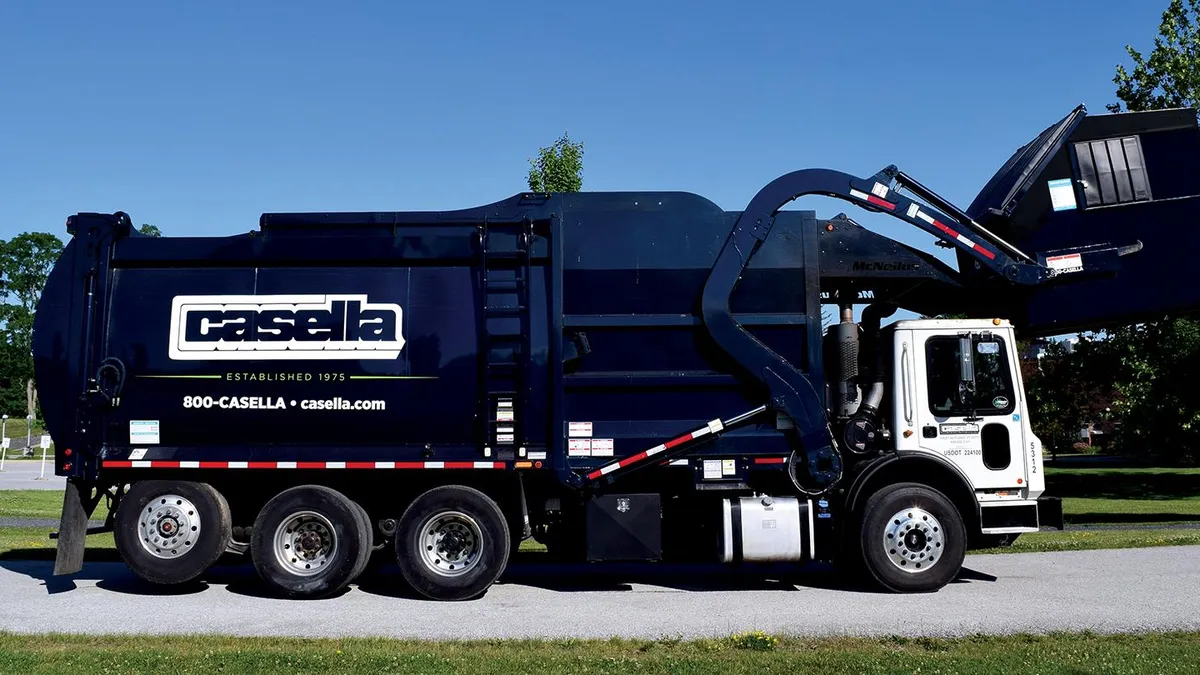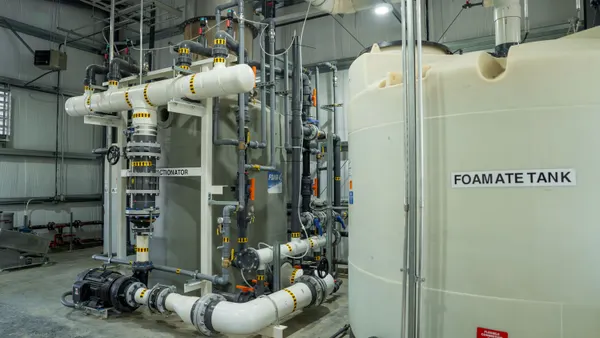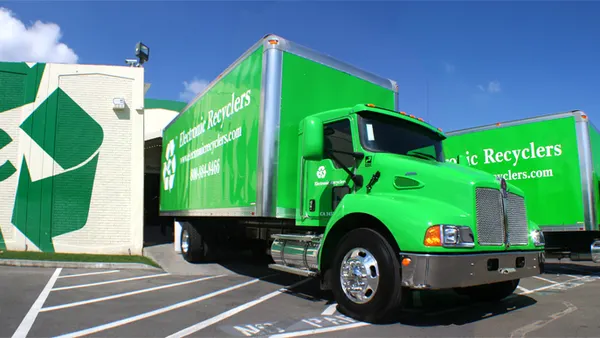Casella Waste Systems has updated its ESG strategy with a “distilled focus on five primary goals.”
The Vermont-based company notes it was previously a participant in the U.S. EPA’s Climate Leaders program, which coincided with a 45% decline in its Scope 1 and Scope 2 GHG emissions between 2005 and 2010. Expectations around environmental, social and governance metrics have evolved since then, at the same time as Casella’s footprint has grown through acquisitions, leading the company to update its strategy in recent years.
In its 2020 report, Casella set 10 goals with a 2030 target date. While aspects of those 10 goals still appear in this new report, targets related to environmental compliance, employee engagement and turnover, renewable energy, employee volunteering and “net climate benefit” have been deemphasized in lieu of the five primary goals. The targets for these remaining five goals are the same as those originally laid out in the 2020 report.
Goal: Reduce Scope 1 and Scope 2 greenhouse gas emissions 40% by 2030
Update: 37% reduction through 2021, relative to a 2010 baseline
Like other competitors, the bulk of Casella’s Scope 1 emissions come from its landfills. The company reports ongoing investment in natural gas projects at certain sites, as well as fugitive emissions monitoring, as ways it intends to reduce these emissions. The company’s combined Scope 1 and 2 emissions for 2021 were 551,180 metric tons of CO2 equivalent, a decline from levels in 2020 and 2019.
Goal: Reduce gigajoules of fuel consumed, per ton of material collected, 20% by 2030
Update: 7.3% reduction through 2021, relative to a 2019 baseline
Fleet emissions are the second-largest component of Casella’s footprint. While the company said efforts to automate collection and optimize routing can play a role, it is also pursuing alternative fuel vehicles. According to the company, such vehicles “comprise a small portion of our routed vehicle fleet, with further expansion limited largely by infrastructure gaps, steep terrain, and winter weather conditions in our operating region.”
In addition to compressed natural gas vehicles, Casella is also assessing the potential for electric trucks. The company said progress has been “delayed by supply chain challenges,” but reports some charging equipment has been installed and two electric trucks are expected to be delivered this year for piloting.
Goal: Reduce, reuse, or recycle over 2M tons of “solid waste materials” per year by 2030
Update: 1.213M tons of material in 2021
This target involves Casella’s Resource Solutions division, which includes recycling and organics operations. According to the company, its 2021 activity included an estimated 700,000 tons of “household, commercial and industrial recycling;” nearly 400,000 tons of “food waste, municipal biosolids and other organics;” and 100,000 tons of "other recycling such as construction debris, mattresses, tires, and electronic waste.” The company also said that four recent acquisitions in the Northeast have added more than 250,000 tons of processing capacity for recyclables and organics to its network.
Goal: Reduce the total rate of recordable safety incidents to 4.0 per 100 employees by 2030
Update: 5.4 through 2021, down from 6.2 in 2019
According to Casella, technology is helping play a role in this area, as well “our redesigned driver training program, which clarifies universal training elements, integrates weekly road tests, leverages the knowledge of experienced trainers, and modernizes documentation requirements.” These systems have been scaled up in recent years amid a period of growth for the company. Casella reported onboarding 481 new employees through acquisitions during 2021.
Goal: Increase annual “community giving” to $2M by 2030
Update: $1.063M in “charitable donations, in-kind services and local community sponsorships” in 2021
Casella first began tracking this metric for 2020, when spending was $1.062 million.











